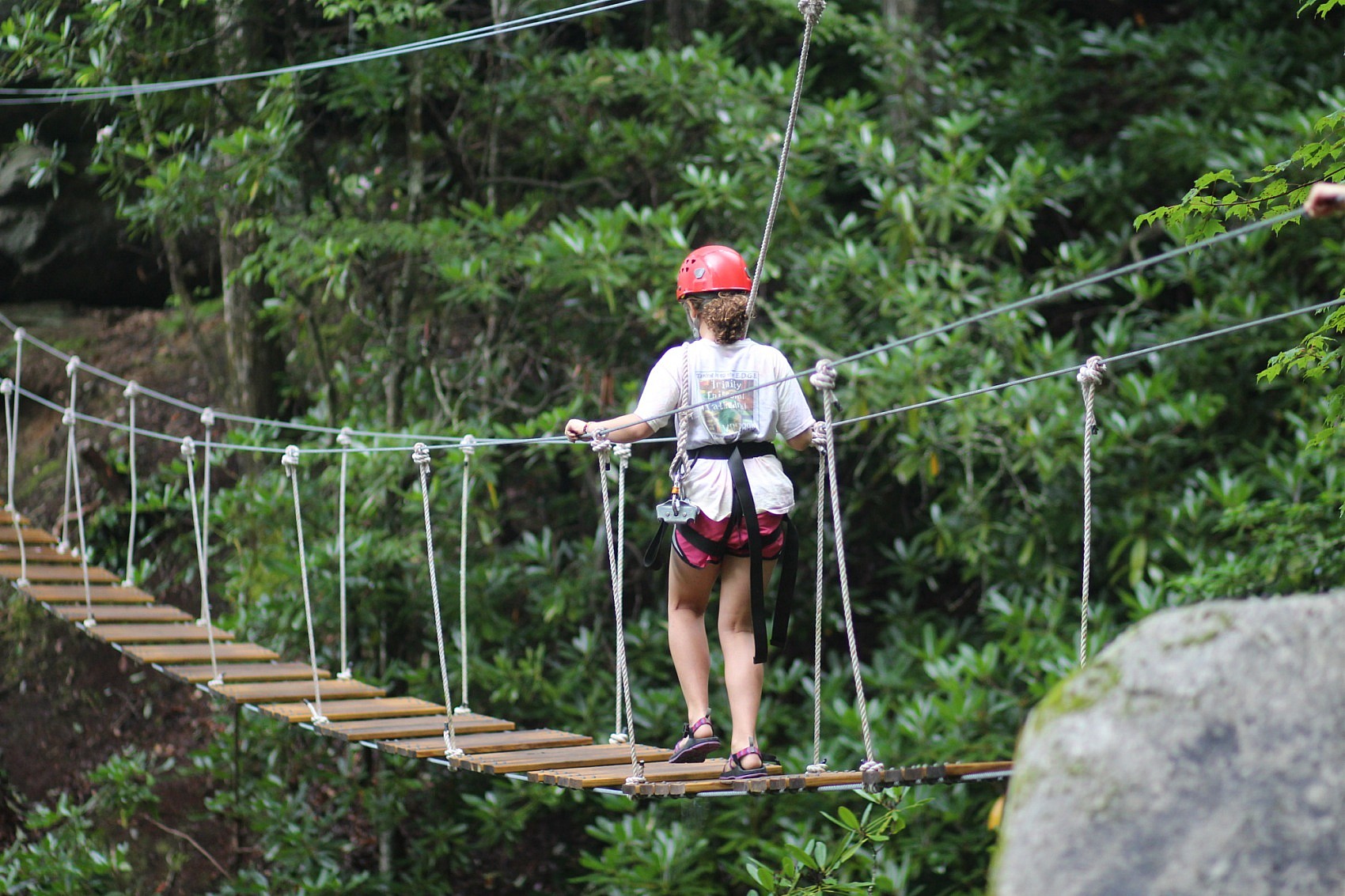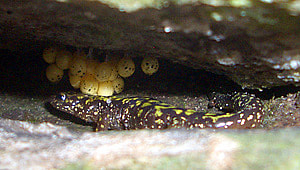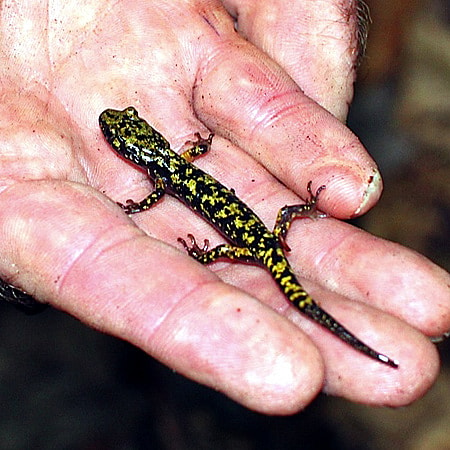There is a secret about the western part of North Carolina, something few people know. It is home to more that 50 distinct species of salamanders (Order Caudata), with North Carolina as a whole having the highest salamander diversity in the world! The so-called “Lungless Salamanders” (Family Plethodontidae) are the most numerous and include one species listed as Rare and Endangered by the State: the Green Salamander (Aneides aeneus). This is the only salamander in North America with green markings, hence its name. These little guys have very specific habitat requirements and are rarely seen.
It just so happens, though, Rockbrook’s Castle Rock and Dunn’s Rock provide a perfect habitat for the Green Salamander. There are plenty of moist, shaded rock crevices for the salamanders to hide in, and for the females, to lay their eggs. Green Salamanders spend most of the year in cool rock crevices, but hide in trees during the summer. They ordinarily live to become 10-15 years old.
Today, Alan Cameron, a 7-year volunteer with the NC Wildlife Resources Commission, came out to Rockbrook for a Green Salamander field expedition. Another naturalist had observed Green Salamanders at the base of Dunn’s Rock, so Alan wanted to verify his hunch that they would be on Castle Rock too. Within 4 minutes of arriving at the rock, he found a Green! Alan believes that the environment on the camp property is ideal for this salamander and that there is likely a very healthy population of them here.
It’s neat to know (now definitely) that Rockbrook is home to this rare and endangered species of salamander. This is important because Rockbrook will always preserve its unique habitat and thereby help insure this special amphibian survives.




I just wanted to thank you for your partnership regarding our Green Salamander conservation efforts in the state. I appreciate your allowing Alan to explore your camp property and document more sites, and I especially appreciate your interest and enthusiasm for this rare animal. It sounds like there is a sense of pride and satisfaction for the camp knowing that you have these salamanders and their habitats on your property.
We would not be very successful in conservation without the help of partners. With the help of experienced, dedicated volunteers like Alan, as well as interested and supportive citizens and private lands like Rockbrook Camp, we have made great strides in conservation efforts for this salamander. Borrowing the phrase, it really does “take a village” to conserve our natural resources, and we have significantly increased our knowledge about this animal, where it still resides, and where its habitat still exists thanks to Alan and folks like yourself.
Very best regards,
Lori Williams, NCWRC
Lori A. Williams
Certified Wildlife Biologist ®
Mountain Wildlife Diversity Biologist
North Carolina Wildlife Resources Commission
[…] One of the ways we often describe Rockbrook is to call it a “forest camp,” a summer camp in the woods, immersed in nature. It has an organic, rustic feeling with lots of big rocks, ancient trees, rushing water, and a healthy population of small plants and animals ripe for discovery by the girls who live here. Instead of crisp landscaped lines, we are happy to allow tree roots to grow across our path, or moss to cover rocks near the lake. We want our experience at camp to include, not be too sheltered from, the textures and patterns of the natural world. Part of our mission is to bring our campers closer to nature, to learn about its complexity, and experience its beauty and wonder. This is a photo of our “Nature Nook,” a small outdoor forest classroom located just down the path to Rockbrook Falls, the largest of the waterfalls on the property. It is home to the activity we simply call “Nature.” For campers who choose it as one their activity periods, counselors lead them on explorations of different trees, leaf collections, creek walks, insect identification, salamander hunts and bird watching. There’s so much to explore too! The 214 acres of Rockbrook are home to incredible natural features, like the cliffs of Castle Rock and Dunn’s Rock for example, but also a few very rare species, like the endangered green salamander. […]